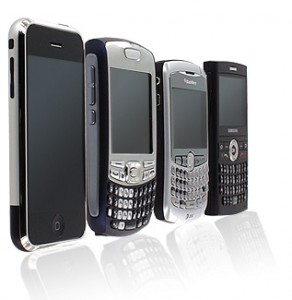 Last month I wrote a Catholic defense of using medications to treat ADHD and ADD. Although medications are important and often essential, the best approach towards treatment of ADD and ADHD is both medication and and behavior management. Even with medications, parents of kids with ADD and ADHD are called to an extra-hard job of parenting. In this blog post I want to offer you a very practical tip for behavior management—using an old smart phone or iTouch to teach organizational skills.
Last month I wrote a Catholic defense of using medications to treat ADHD and ADD. Although medications are important and often essential, the best approach towards treatment of ADD and ADHD is both medication and and behavior management. Even with medications, parents of kids with ADD and ADHD are called to an extra-hard job of parenting. In this blog post I want to offer you a very practical tip for behavior management—using an old smart phone or iTouch to teach organizational skills.
The first rule of ADD and ADHD parenting is to love your children passionately. Remember that God made them for YOU, and that He will give you the strength and resources to parent them. The second rule is never to let your child’s diagnosis justify bad behavior. Kids with ADD and ADHD need to be held to the same family behavior standards as other children. They need to do age-appropriate homework and chores like everyone else. They should be expected to sit in their chair through family dinner. With a lot of patience (and perhaps medication), you can even teach them to get through the family rosary.
The job of a parent of an ADHD or ADD child is to be a secretary, to constantly remind and try to implement routines and systems of order and organization. Try to be a secretary first, then (and only then) a disciplinarian. This role can turn mom and dad into the nag they never wanted to be. Thankfully, we now have a digital secretary available for kids with ADHD and ADD—the smart phone. Do you have an old smart phone collecting dust in a drawer? Great! Read on to put it to good use.
How to set up a smart phone to help your child with ADHD/ADD:
1) Disable the telephone and internet features of the phone. Children under age 12 should not have unregulated access to a cell phone or the internet, especially kids with ADHD and ADD! But you can disable the internet and telephone features and still use a smart phone as digital assistant, providing reminders and academic support.
2) Set alarms with cool ringtones for different daily activities. For example, have an alarm for getting up in the morning, for getting dressed, for packing their school work in their backpack etc. Whatever those things are that you have to remind your child to do daily, set an alarm for it. Now the phone becomes the nag, not you!
3) If the phone has a “reminders” feature (as do many iPhones), you can consider using this feature in place of the alarms, especially for activities that are not recurring.
4) Put a ToDo list on your child’s smart phone. Include all their chores. Add a reminder or alarm when it is chore time.
5) If you want to get even more sophisticated, set up an Outlook or Google calendar for your child, and sync your smart phone to the calendar by manually connecting the phone to your computer. Put your child’s daily schedule on the calendar, including homework time, dinner time, soccer practice, etc. Set reminders to chime 5 minutes before each activity.
6) Make it fun! Let your child use the camera and/or music features of the smart phone. You can still sync to iTunes yourself provided that you don’t give your child your iTunes password. Make sure the phone is so much fun that they have it attached to them every time one of those reminders is about to go off.
7) Give digital rewards—let your child pick a new song from iTunes or a new educational app if they complete all their chores on the todo list or make it through the day without reminders from you.
8) Inspire creativity—as a reward, allow your child to download the photographs they have taken with their phone onto a family computer. Let them use photo editing software to make collages and fun gifts.
9) Have your child turn the phone off while in school, or leave it at home.
10) Once your child is in love with their phone, install a free rosary app and remind them to love God, not their phone. Then ask them to lead the family rosary.
If you try this smart phone approach, please do submit a comment—I’d love to hear your tips on what worked and what didn’t work for your family.
Copyright 2012 Kathleen Berchelmann, MD
About the Author

Guest
We welcome guest contributors who graciously volunteer their writing for our readers. Please support our guest writers by visiting their sites, purchasing their work, and leaving comments to thank them for sharing their gifts here on CatholicMom.com. To inquire about serving as a guest contributor, contact editor@CatholicMom.com.


.png?width=1806&height=731&name=CatholicMom_hcfm_logo1_pos_871c_2728c%20(002).png)
Comments